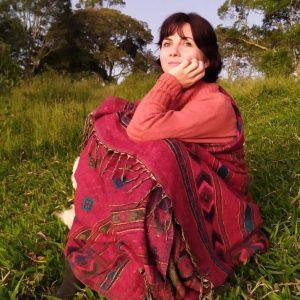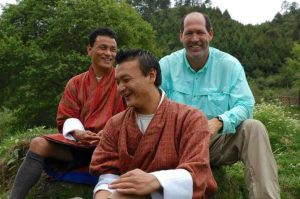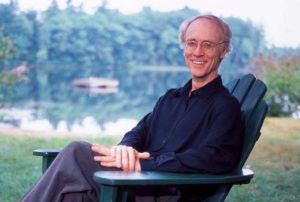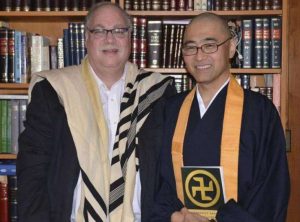You can only incarnate now when you die to the content. You can be reborn, regenerate totally if you die to the content. So living is dying. Living, love, and death are one, moving and indivisible, and that is immortal. — Jiddu Krishnamurti
Ayurveda
Ayurveda is an ancient system of medicine rooted in the Indian subcontinent. It has garnered worldwide acclaim for its holistic approach health and cultivating a balanced lifestyle. Among the regions of this vast subcontinent, the southwestern state of Kerala stands out as a bastion of the Ayurvedic tradition, celebrated for its authentic practices and serene environment conducive to healing and rejuvenation.
Ayurveda, which can be translated as “the science of life,” is more than just a system of medicine; it is a philosophy that interweaves the physical, emotional, and spiritual aspects of health and well-being. With origins that date back more than 5,000 years, it emphasizes a balance of body, mind, and spirit to achieve wellness. Ayurveda’s comprehensive approach encompasses diet, herbal remedies, exercise, meditation, and various other techniques.
These fundamentals are what I understood before going to an Ayurvedic retreat in Kerala. One thing of which I was sure—which I could feel in my body and in my mind—was that I was carrying an accumulation of small things and broken fragments that I had stored like the clutter of grey “other” files that fill up your smartphone’s storage capacity.
Although not physically unwell, I sensed the lingering residue of emotional pain within, and attending the retreat was a conscious decision driven by my desire to proactively address these stored emotions, rather than waiting for them to later manifest as ailments.

A friend of mine had undertaken the same retreat before and recommended the place and the doctor. Unlike most wellness centers, the facilities were rustic, and Dr. Sankar, the attending physician, made it clear that he wanted to treat only those who were willing to endure the discomfort of the process, which, he acknowledged, was not easy.
My room at the retreat, which I shared with my friend, was round and painted in a fainted pastel green, with some moisture stains. In the middle was a bed with a hard, thin mattress covered by old sheets and shrouded by a mosquito net. To the side, a small and very old metal cabinet stood against the wall. The bathroom was dimly lit and offered only cold water, emphasizing the simplicity of the facilities.
Behind the room, water was heated over a wood fire and the resultant smoke often invaded our airspace, circulated by the slow ceiling fan. The days were hot and sticky, and I felt as if I needed to cut the air in order to move through it. But I had anticipated this; in fact, there are moments in life when an excess of comfort and perfection can become bothersome, as if someone were seeking to lull me into unconsciousness, despite the reality that we really need very little to live and be happy. Such excess comforts can change our internal reference points until they slowly become a standard of living that we need, ever wanting more and more from the world of material consumption. The optimal approach, I find, is to navigate carefully between these two worlds.
I was to inhabit this place for the next two weeks in order to cleanse myself of what no longer served me; to purge and let it whither. Cutting out coffee and sugar resulted in two days of headaches, after which I felt fine. Day by day, I found my mind becoming calmer, with fewer ups and downs. I made myself open to change.
My first consultation with Dr. Sankar included some short personal questions that surprised me by how they entered my heart like sharp little needles. “I thought I had understood that better,” I pondered to myself. Yet something within me recognized that I had much that needed to be cleansed—which was why I had come here. It’s curious how much I dislike my weaknesses to be seen by others; I prefer to be perceived as a strong and inspired person. Letting my guard drop to reveal my inner self can feel like a needle penetrating the skin of my heart, but is there another way to extract the poison?
As tears I was unprepared for rolled timidly down my cheeks, Dr. Sankar proposed that instead of undergoing the full panchakarma treatment, which includes drinking ghee for five days, I should opt for other courses of cleansing—a suggestion I accepted.

Detoxification
The emotional detox process in Ayurveda involves a combination of physical and mental therapies, including:
Panchakarma: A set of five procedures intended to purify the body. These includes therapies such as Vamana (emesis), Virechana (purging), and Basti (enema), which are thought to cleanse the body and calm the mind.
Meditation and yoga: These practices are integral to Ayurveda and help in calming the mind, reducing stress, and promoting mental peace and clarity.
Herbal treatments: Ayurveda uses a range of herbs known for their calming properties. These are often prescribed alongside other treatments to help balance the body’s bio-energies, known as doshas.
Dietary modifications: Ayurveda stresses the importance of a balanced diet in maintaining emotional and physical health. Specific dietary recommendations are made based on an individual’s dosha type.
Counseling and lifestyle changes: Ayurvedic practitioners often provide counseling and recommend lifestyle changes to help individuals manage stress and emotional upheaval.
I had no great expectations, as anything I could undertake would be better than doing nothing. And so I surrendered to the process. That round, dark room felt like a womb in which I was gestated. I spent hours each day resting, reading, daydreaming, or having long conversations with my friend while looking at the ceiling through the mosquito net. We had each other to mirror the process, which I think was important: we both knew that we each had very different inner toxins to let go—some that were easier for me and some that were more challenging for him, and vice versa. Patiently we stood by each other, in the process coming to know each other like never before.

Our treatments were also very different: he drank ghee for five days while I didn’t. His assistant was a gruff man who spoke no English, while I had an angel named Jasmin to care for me. Jasmin was young and small; she wore a shawl over her head and smiled.
I entered the hot, dark treatment room. On the left stood a small altar bearing holy seeds, a butter candle, and a sandalwood statue of the Hindu god Dhanvantari, who is often depicted holding a pot of amrita, the nectar of immortality that symbolizes the healing aspect of Ayurveda. The table-bed was made of a dark wood, probably five generations ago, with carved edges so that water and oil could drip away. The moment I lay down, completely naked, Jasmin would touch my feet with a little prayer, asking silently for permission to intervene on my body and begin pouring warm oil and herbs over me, massaging with skill until my hair was dripping.
It became a daily ritual in which I surrendered to the process. The lessons of recent years had taught me resilience, and now my deepest yearning was to transcend any life story or ailment and experience only profound bliss and reverence for life such that only dissolution remained. At this point, I felt ready for my life to unfold, creating an inner space in which I could embrace a new path, a new love, and a thousand new stories with a free spirit touching both the earth and the sky.
The first few days of treatment, once in the morning and once more in the afternoon, felt much like any other massage. It was only in the second week that things started moving.
After the third day of inner cleansing, my body was covered with oil and I had the enema procedure. Jasmin and another woman carried me to the bathroom to shower me when suddenly I urgently needed to rush to the toilet. Yet I couldn’t rush as even the soles of my feet and palms of my hands were coated in oil. As I tried to sit on the toilet, I slipped unsteadily. I found myself in a most unusual situation: sitting on the toilet completely naked and covered in oil, unable to hold onto anything, with two ladies holding my hands to assist me—feeling more exposed and vulnerable than I could have imagined.
I began to laugh at the predicament and then I cried . . . and cried. Suddenly I felt immensely sick and nauseous, as though I was about to die. And then I fainted.
I awoke back on my wooden bed, now with four ladies around me—one rubbing herbs on the top of my head and another pouring a kind of salty milk into my mouth. The smoke of the strong incense filled the air, keeping the mosquitos away and making me feel intoxicated, but Jasmin’s silhouette through the light and smoke calmed me. She was holding my hands like a caring mother, her eyes following me expectantly as I woke up. When I came to my senses, I looked for Jasmin. She smiled softly and whispered, “It’s all right now, ma’am.” She took me back to the bathroom, where she patiently washed me from a bucket of water, then dried and dressed me. As I walked slowly back to my quiet room, I felt like a newborn baby.
The silence within was indescribable. There were no thoughts, which somehow allowed something to penetrate and touch deeper, helping me to recognize a very soft and rare emotion that I was unable to explain to my friend—that one must simply trust that we can, in fact, feel bliss and pain at the same time and with the same intensity. It’s not one or the other; it’s not getting rid of one thing and pursuing only the other; instead, it’s clearly accepting what is, altogether and without labelling, which felt so liberating. If we could only trust life more—realizing that life is more sublime and wonderful than anything else that we might wish to hold or wish to do—our hearts would flow with much more ease.
Do we know what love is? Never knowing it is the wonder of it, the beauty of it. Never knowing, which does not mean remaining in doubt nor does it mean despair; it’s the death of yesterday and so the complete uncertainty of tomorrow. — Jiddu Krishnamurti

Reflections
I know that this was but a small taste of how deeply I can experience my potential in this world. Usually, these retreats should be a minimum of three weeks, which I highly recommend, because to be able to open, process, and cleanse truly, we need to do so in a protective container—that is the most important condition.
Ayurveda represents an inner technology of healing composed of so many wisely chosen steps, which should not be interrupted. To undertake such a retreat, one must be ready to surrender and go on until the end. It’s a process that involves doubt and fear, but the only way out of darkness is to go through it. And it is best if you can be assisted on the way. And I was so grateful that I did it that way.
If we are an entire universe unto ourselves, why to choose to explore only what little we already know? We ask for great transformations, but so often we are frozen by fears of what might happen to us, basically choosing to avoid pain and suffering. I believe that, with time, as we grow mature in this world, we can learn that suffering must not be rejected, but skillfully managed as a tool to soften our rough edges and bring a greater quality of presence and understanding of the nature of all things. Facing our fears, peering into the dark corners, examining our weaknesses and vulnerabilities, and having our tears and (literally) our shit exposed is the only way for this alchemy to happen.
“There is no transformation without destruction,” so said Dr. Sankar, inspired by Shiva’s methods. And I agree with him because, as a lover of nature, I can see clearly how Nature shows us this wisdom all the time. I ask myself why the death of the symbolic and literal is the hardest to accept, when this is what creates room for the new: we must die for our ideas, concepts, utopias, ideologies, and personal narratives in every moment to make space for what we call love.
Spring is always followed by winter. We should know when to enter winter and when to welcome spring . . . again and again, until that final day when we return this body to nature—back to earth, water, fire, air, and space. Shall this body be a final offering? Shall my death be a generous returning as an elixir to all the five elements? Shall the residue of poison be just the right dosage? No more or less, to be mixed in the presence of other beings to create the eternal antidote that keep us alive and open to love; the invisible foundation of life that gives us the subtle breath of purpose.
See more
Tiffani Gyatso
Yangchenma Arts & Music
Related features from BDG
The Horse, the Rider, and Onions . . .
Natural Radiance and the Outer and Inner Sun
Life Is Not Useful
Opening to Beauty












